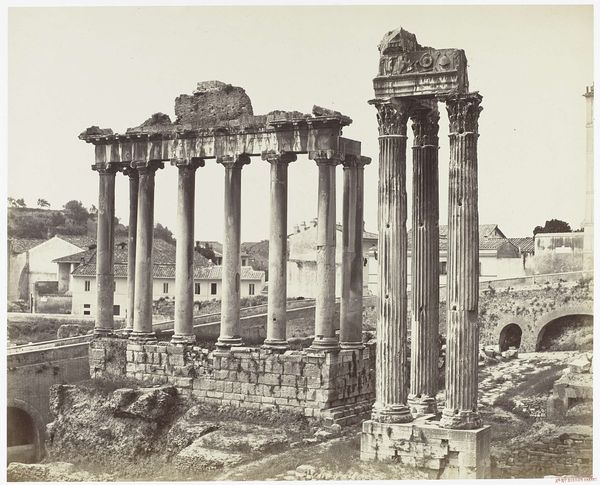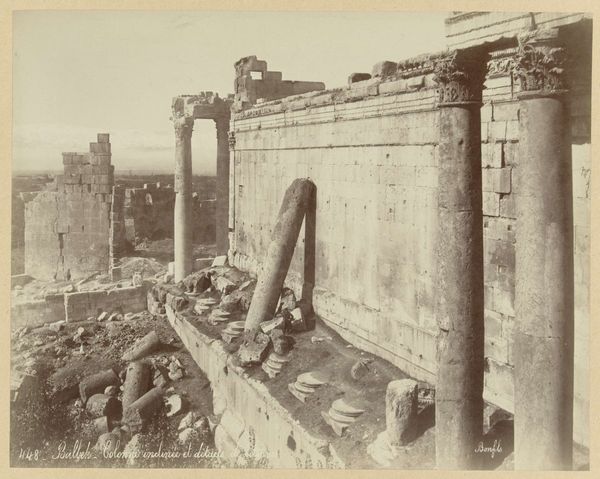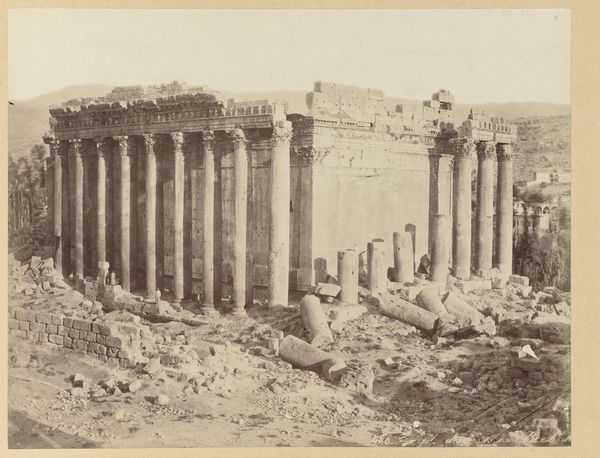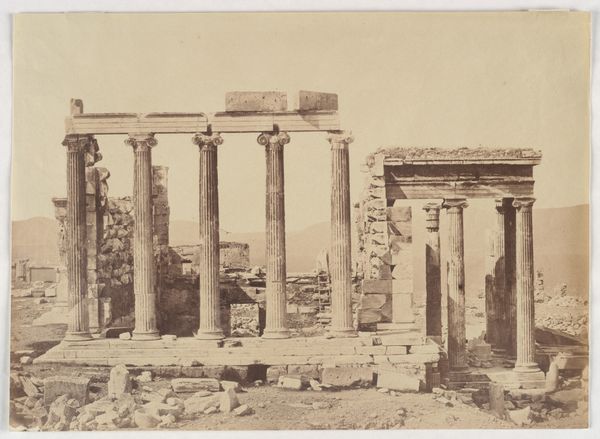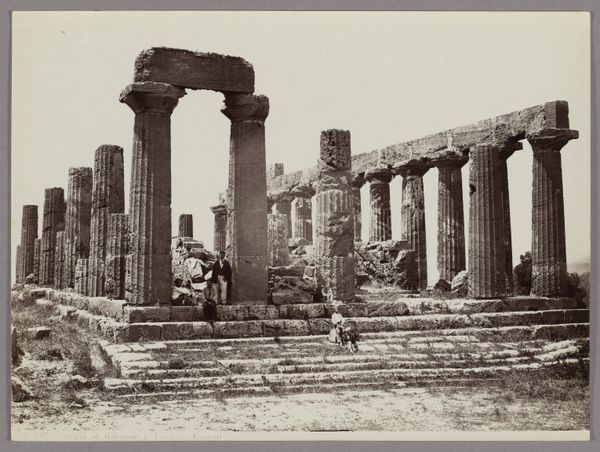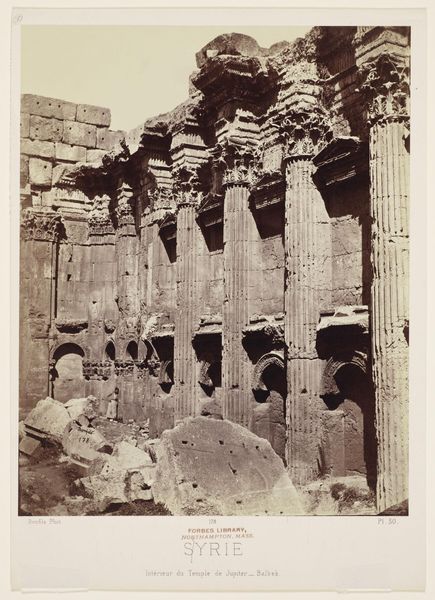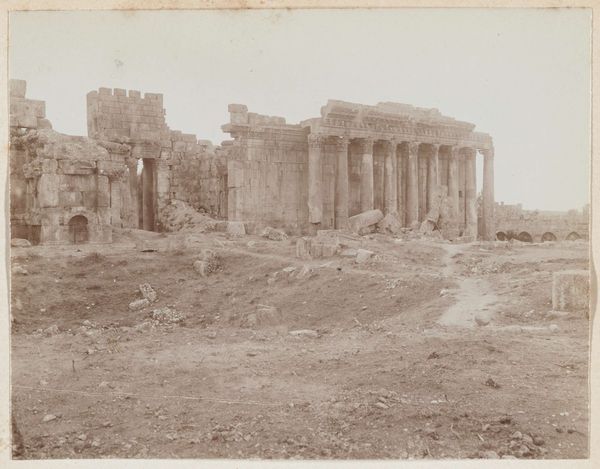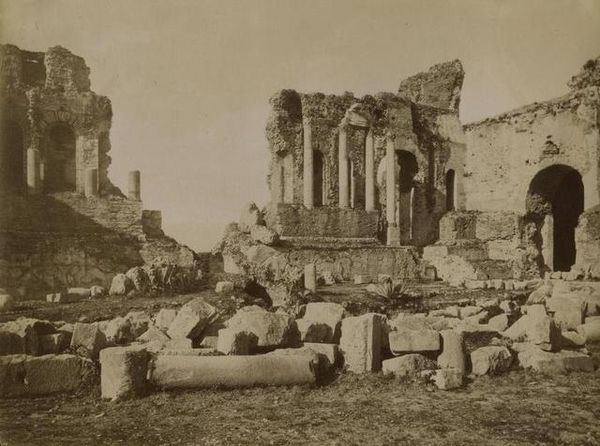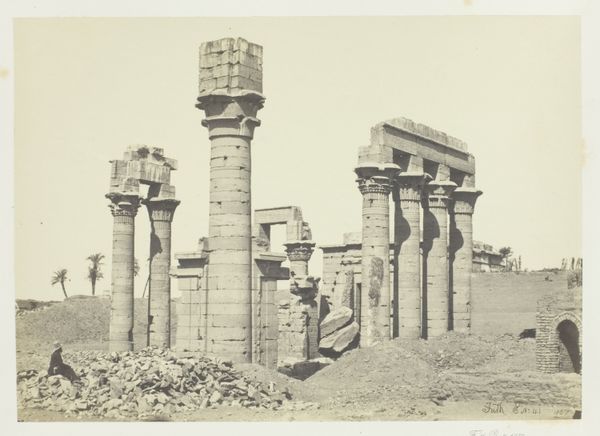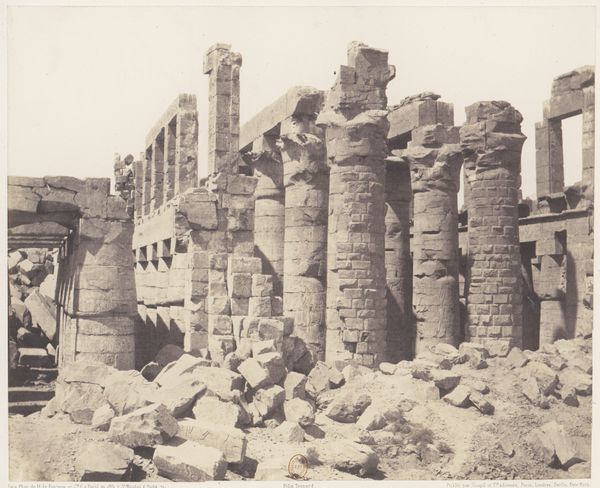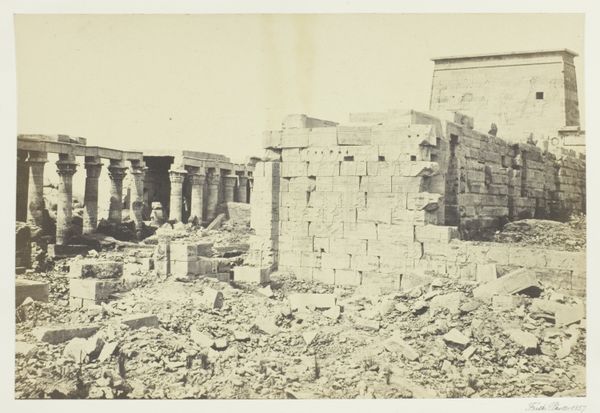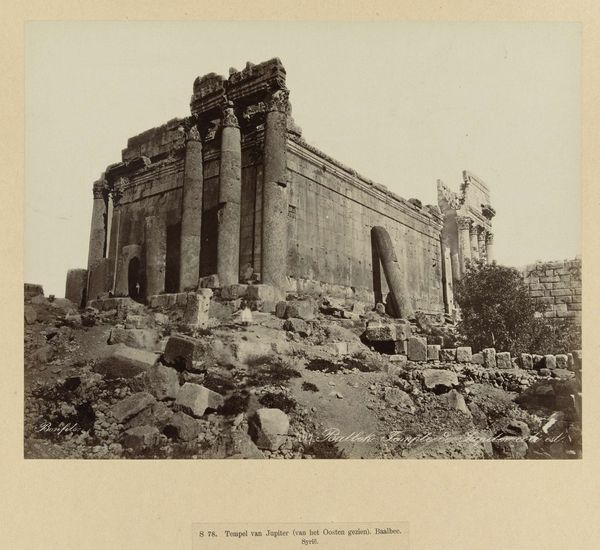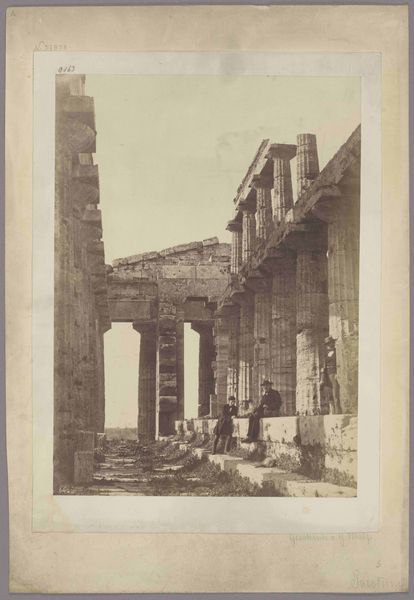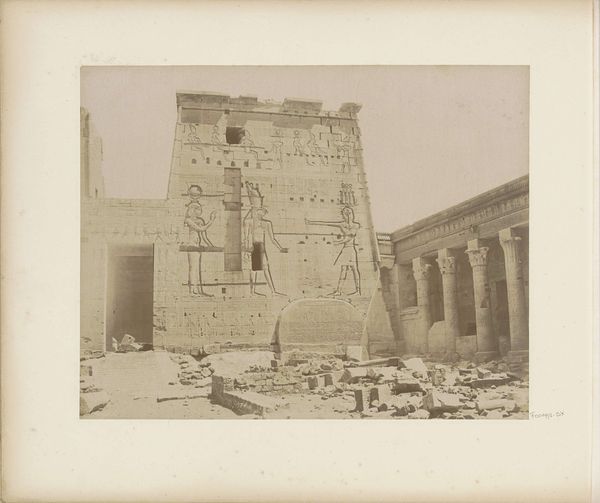
print, photography, site-specific, albumen-print
# print
#
landscape
#
photography
#
ancient-mediterranean
#
site-specific
#
19th century
#
albumen-print
#
realism
Dimensions: height 218 mm, width 277 mm, height 468 mm, width 559 mm
Copyright: Rijks Museum: Open Domain
Curator: This albumen print by Félix Bonfils, titled "Ruïne van de tempel van Bacchus, Baalbek," was taken between 1867 and 1877. What strikes you first about it? Editor: The scale, definitely. And this somber stillness; it's as if time itself is pausing within these crumbling walls. There’s a powerful weight of history hanging in the air. Curator: The albumen process itself contributes to that feeling, doesn't it? Consider the labor involved in preparing the glass negatives, the careful coating with egg whites, the exposure... the entire process lends gravity. Each print becomes a unique artifact reflecting the intersection of human effort and the slow decay of centuries-old construction. Editor: Exactly! And that slow decay tells a story, doesn’t it? Look at the Corinthian columns. Originally erected to honor Bacchus, a deity synonymous with festivity and liberation, but time and perhaps conflict have ravaged the architecture to this degree. Consider how shifting cultural winds can bury what once seemed permanent. Curator: Absolutely. The very substance of these stones—likely limestone, quarried locally—speaks to the region’s deep geological past and its exploitation. The wear patterns are a record of physical and chemical interactions: wind, rain, the clumsy hand of humans altering, repurposing. This is where grand architecture meets quotidian realities, revealing not just glory, but the long arc of labor and building. Editor: The play of light and shadow seems deliberate, doesn't it? Bonfils frames an open doorway that reveals foliage and perhaps a vista in the distance; almost like an allegorical passage from the ruins of the past to… what? Future hope? Or another cycle of rise and fall? Curator: Or the endless continuity of the material world… Rock erodes, reforms; temples are built and decay. This albumen print itself, in its delicate materiality, serves as another, smaller instance of impermanence and gradual material degradation, constantly reacting to its own environment. Editor: It seems like Bonfils’ photograph then operates almost like a modern vanitas. We ponder these fragments and infer a larger human narrative regarding power, transience, belief, and the inevitability of erasure. Curator: Well, looking closely at this work offers us a lens not just on antiquity, but on the nature of representation itself. The tangible qualities of its photographic origins deepen our appreciation for its thematic focus on material and human agency over time. Editor: Indeed. I find that pondering its iconography alongside understanding how it was made makes it even more evocative.
Comments
No comments
Be the first to comment and join the conversation on the ultimate creative platform.
